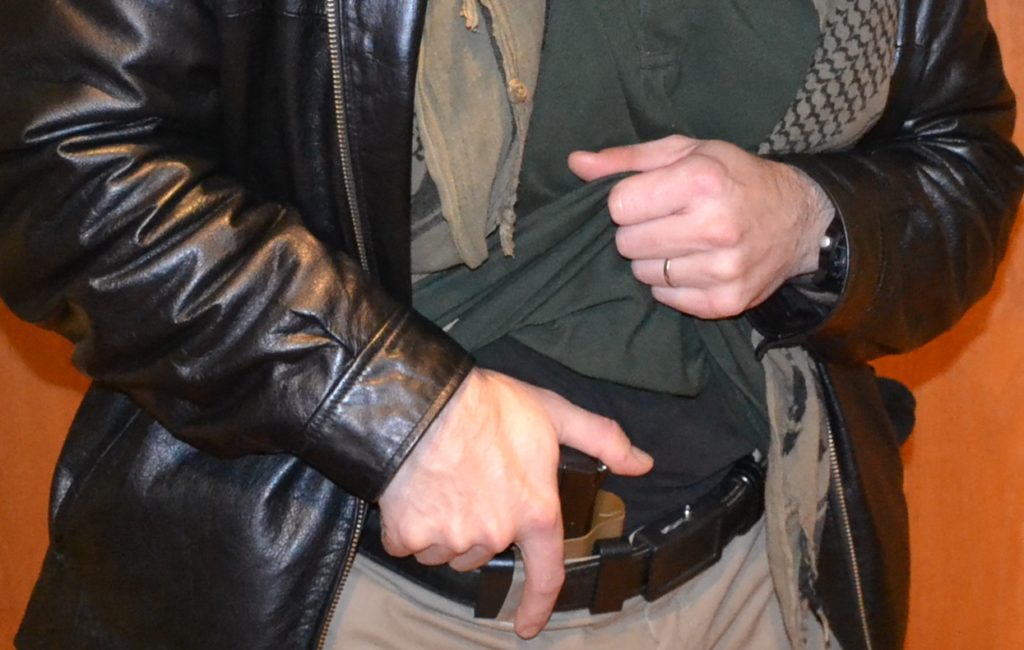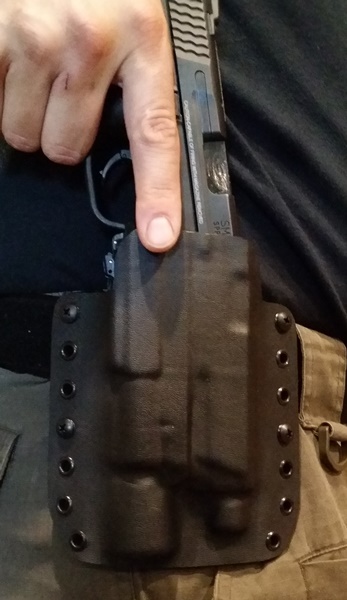Introduction
Carrying a concealed firearm requires careful consideration of several factors, including comfort, concealment, and accessibility. As we often discuss in our CCW classes, comfort is very important. If you are not comfortable, you are less likely to carry. Two popular methods for concealed carry are the appendix carry and standard hip carry (also known as strong-side carry). In this article, we will compare these two methods, highlighting their advantages, disadvantages, and the considerations that individuals must keep in mind when choosing the right carry position for their needs.
Appendix Carry: Pros and Cons
Appendix carry refers to carrying a firearm in the front of the body, typically just to the right or left of the centerline, and usually inside the waistband. This method has gained popularity for several reasons:
Advantages:
-
Concealment: Appendix carry offers excellent concealment as it positions the firearm close to the body’s natural contours. Clothing, like untucked shirts or jackets, can easily cover the firearm. Printing of your firearm will also be determined by your belly size…so lose that belly fat!
-
Quick Access: The appendix position allows for rapid access to the firearm with both the dominant and the non-dominant hand. This can be crucial in self-defense situations. Your firearm is also easier to access if you find yourself on the ground on your back fighting for your life.
-
Retention: The firearm is in a location that is more difficult for an attacker to grab during a struggle.
-
Comfort While Seated: Many people find that appendix carry is more comfortable when sitting for extended periods compared to hip carry.
Disadvantages:
-
Safety Concerns: Some argue that the muzzle direction in appendix carry may pose safety risks, especially when re-holstering. Proper training and holster selection are essential to mitigate these concerns. REMEMBER YOUR LIFE SAFETY RULES: KEEP YOUR FINGER OFF THE TRIGGER AND OUTSIDE THE TRIGGER GUARD UNTIL YOU WANT THE GUN TO FIRE!
-
Comfort While Standing: Appendix carry can be less comfortable when standing, especially for individuals with larger midsections AKA a big belly. The firearm may dig into your abdomen.
-
Body Shape Matters: Individuals with larger stomachs or specific body shapes may find appendix carry uncomfortable, or unable to conceal their firearm.
Standard Hip Carry (Strong-Side Carry): Pros and Cons
Standard hip carry refers to carrying the firearm on the strong side (usually the dominant side), typically at the 3 o’clock or 9 o’clock position. This method has been a traditional choice for concealed carry and offers its own set of advantages and disadvantages:
Advantages:
-
Comfort While Standing: Hip carry is generally more comfortable when standing or walking, as it does not press the firearm against the abdomen.
-
Established Technique: It is a well-established and widely taught method, making it easier to find training resources and holsters.
-
Muzzle Direction: The muzzle typically points in a safer direction when re-holstering, reducing the risk of an accidental discharge.
Disadvantages:
-
Concealment: Hip carry can be more challenging to conceal, especially in warm weather or with tight-fitting clothing, as the firearm may print or become visible.
-
Slower Access: Drawing from a hip carry position can be slower compared to appendix carry because the firearm is further from the centerline of the body.
-
Retention: The firearm may be more accessible to an attacker during a physical struggle and less accessible to you, depending on your positioning.
Choosing the Right Carry Method
Ultimately, the choice between appendix carry and standard hip carry comes down to personal preferences, body type, and lifestyle. Here are some factors to consider:
-
Body Shape: Your body shape can significantly influence the comfort and concealment of both carry methods. Experiment with different positions to find what works best for you.
-
Training: Whichever method you choose, seek proper training to ensure you handle your firearm safely and effectively. Training can also help you become proficient with your chosen carry method.
-
Wardrobe: Consider your clothing choices. Some outfits may be more compatible with one carry method over the other.
-
Holster Selection: Invest in a high-quality holster that suits your chosen carry method. A good holster is essential for both safety and comfort.


